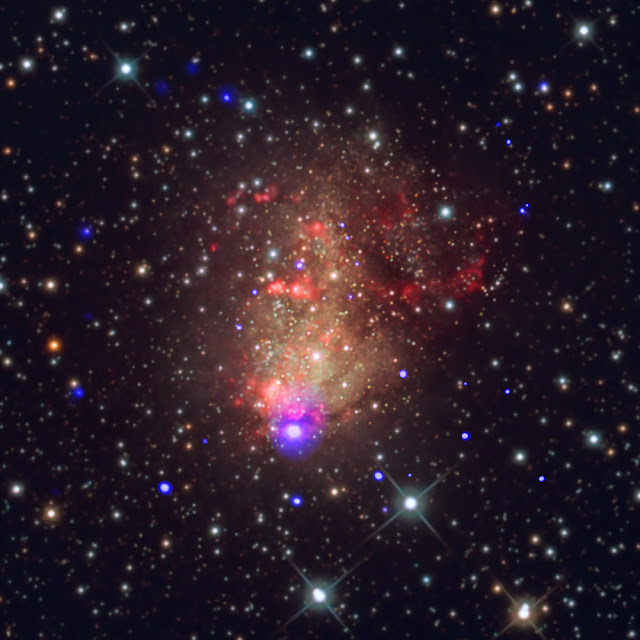astrobites | Daily Paper Summaries | 2020 May 16
Huei Sears wrote:
Galaxy evolution is a complicated thing! Our current theory is that gas comes in, stars get made & explode, the surrounding interstellar medium (ISM) heats up and gets enriched with metals, and then gas goes out. These processes are happening in different stages all across the galaxy and can make simulating and observing galaxy evolution very difficult. Thankfully, through years of observation of local galaxies, we know that some galactic properties are correlated! For example, Tremonti et al. (2004) showed that there is a relation between stellar mass (M∗) and gas-phase oxygen abundance (12 + log(O/H) or Z) in the local universe (redshift, z ~ 0). In 2008, Ellison et al. discovered that this M∗-Z relation also has a dependence on the star-formation rate (SFR), in the local universe. This relation was shown later to be more correlated than the M∗-Z relation on it’s own!
The questions that then arise are: is there evidence for a M∗-SFR-Z relation at high-z? And if so, does it agree with the one at z~0? Or does it evolve with redshift? Many have tried to answer these questions, but most of these studies were based on large samples with low signal-to-noise (S/N) or small samples with intermediate S/N and have relied on a single metallicity indicator. But not anymore! ...
The MOSDEF Survey: A Stellar Mass–SFR–Metallicity Relation Exists at z ~ 2.3 ~ Ryan L. Sanders et al
- Astrophysical Journal 858(2):99 (2018 May 10) DOI: 10.3847/1538-4357/aabcbd
- arXiv.org > astro-ph > arXiv:1711.00224 > 01 Nov 2017 (v1), 26 Jun 2018 (v2)
